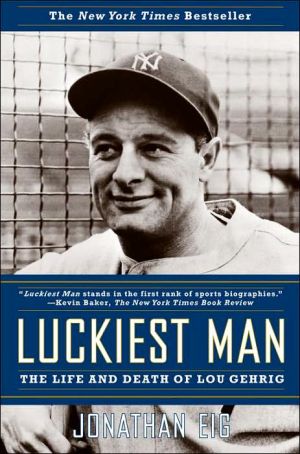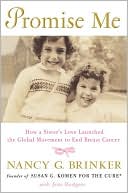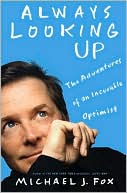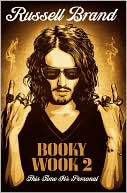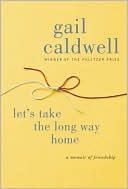Luckiest Man: The Life and Death of Lou Gehrig
Lou Gehrig was a baseball legend — the Iron Horse, the stoic New York Yankee who was the greatest first baseman in history, a man whose consecutive-games streak was ended by a horrible disease that now bears his name. But as this definitive new biography makes clear, Gehrig's life was more complicated — and, perhaps, even more heroic — than anyone really knew.\ Drawing on new interviews and more than two hundred pages of previously unpublished letters to and from Gehrig, Luckiest Man gives us...
Search in google:
Lou Gehrig was the Iron Horse, baseball's strongest and most determined superstar — struck down in his prime by a disease that now bears his name. But who was Lou Gehrig, really? What fueled his ferocious competitive drive? How did he cope with the illness that abruptly ended his career and drained him of his legendary power? Drawing on dozens of new interviews and hundreds of pages of Gehrig's personal and previously unpublished letters, this definitive biography gives us a deeper, more intimate understanding of the life of an American hero. Lou Gehrig is regarded as the greatest first baseman in baseball history. A muscular but clumsy athlete, he grew up in New York City, the sole survivor among four siblings. He idolized his hardworking mother and remained devoted to her all his life. Shy and socially awkward, especially around women, Gehrig was a misfit on a Yankee team that included drinkers and hell-raisers, most notably Babe Ruth. Gehrig's wife, Eleanor, was an ambitious young woman who pursued him and persuaded him to embrace his growing stardom. For years, rumors have persisted that she and Ruth had an affair, and that this was the event that ended the friendship between the two ballplayers. Gehrig and Ruth formed the greatest slugging tandem in baseball history. They were the heart of the first great Yankee dynasty. After Ruth's retirement, Gehrig and a young Joe DiMaggio would begin a new era of Yankee dominance. But Luckiest Man reveals that Gehrig was afflicted with amyotrophic lateral sclerosis (ALS) much sooner than anyone believed, as early as the spring of 1938. Despite the illness, he didn't miss a game that year, keeping intact his astonishing consecutive-games streak, which stood for more than half a century. After he was diagnosed, Gehrig's doctors allowed him to believe he had a fifty-fifty chance of surviving what they knew to be a fatal illness. The same doctor who wrote him encouraging letters secretly wrote Eleanor Gehrig to tell her the terrible truth. But even as his body deteriorated and Gehrig realized he was dying, he never despaired. In his final months Gehrig proved himself truly to be the Iron Horse. The man who spoke spontaneously from the heart when he gave his great speech at his farewell in Yankee Stadium continued to sound the same themes: that he'd led a good life and had much to be thankful for. In Luckiest Man Jonathan Eig brings to life a figure whose shyness and insecurity obscured his greatness during his lifetime. Gehrig emerges on these pages as more human and heroic than ever. The Washington Post - Jonathan Yardley … it is entirely appropriate that, after all these years, Gehrig is the subject of a full biography that treats him not just as a superb athlete but also as an admirable, if far from flawless, human being. Many books have been written about him in the past, including biographies by the (now forgotten but once notable) journalists Frank Graham and Paul Gallico, but they are standard sports-page fare, closer to hagiography than to biography. Eig, who writes for the Wall Street Journal, does better. His prose rarely rises above competence, but his research is thorough, and he pays due attention to Gehrig's few shortcomings as well as his many strengths. Eig's biography doesn't do quite as well by Gehrig as Robert Creamer's Babe did by that other famous Yankee, Babe Ruth, but Luckiest Man is good, solid work.
Prologue\ Lou Gehrig stepped onto the field at Yankee Stadium wearing a pinstriped uniform that no longer fit. His pants were bunched at the waist. His jersey billowed in the wind. The crowd hushed as they watched him walk, head bowed, feet shuffling, arms hanging weakly at his sides. They had seen him make the trip from the dugout to home plate thousands of times, but never like this, never with a look of dread creasing his face.\ It was July 4, 1939, Lou Gehrig Appreciation Day at Yankee Stadium, a hot and sticky afternoon. For the first time in his life, Gehrig was afraid to be on a ballfield. He was thirty-six years old and dying. His Yankee teammates and their opponents that day, the Washington Senators, were lined up on the infield grass, waiting for the ceremony to begin. His wife and parents watched from box seats along the third-base line. More than 61,000 people sat elbow to elbow in the stands.\ Gehrig never looked up. When he finally reached home plate, he stopped and scratched at the dirt with his feet. The master of ceremonies introduced some of the special guests in attendance, including Gehrig's former teammate Babe Ruth and New York mayor Fiorello H. La Guardia. Gehrig twisted his blue cap in his hands and tottered from side to side as he listened to a series of short speeches. Next came the presentation of gifts: a fishing rod, some silver plates, a trophy with an eagle on top. He accepted them without saying a word.\ The crowd applauded, but only politely. Here was Gehrig, the greatest first baseman the game had ever seen. Yet for all his accomplishments, his movie-star looks, and his gentlemanly manner, fans, somehow, had never shown overwhelming enthusiasm for him. Sportswriters said he lacked color. He was no Babe Ruth, they complained. The Babe was the Bambino, their child, and people loved him unconditionally. Gehrig's nickname — the Iron Horse — was inspired by a train, and it was perfectly apropos. Most people don't appreciate a train's strength and reliability until they're standing on the platform one day and it doesn't show up.\ When the presentations were over, the emcee, Sid Mercer, asked if the guest of honor had anything to say. Gehrig answered with a slight, almost imperceptible shake of the head, no. He was afraid he'd collapse if he tried to speak. Workers moved into position, ready to roll up the wires and pull down the microphones. Only then did it dawn on the men and women in the stands that he was going away. Cries of protest rang out. The shouting grew louder and spread like a fever through the stadium. Soon, all the fans were on their feet. Their voices came together in a chant that shook the grandstand: "We want Lou! We want Lou!"\ Gehrig stood still. His shoulders hung limp and heavy. At last, Joe McCarthy, manager of the Yankees, walked over and whispered in his ear. Gehrig nodded, ran his fingers through his hair, and stepped hesitantly toward home plate. The chanting stopped. Silence blanketed the stadium again.\ Ever so slowly, Gehrig leaned toward the microphones and drew a deep breath. He was about to deliver one of the saddest and strongest messages an American audience had ever heard.\ Copyright © 2005 by Jonathan Eig
Contents Prologue Chapter 1: The Survivor Chapter 2: "Babe" Gehrig Chapter 3: At Columbia Chapter 4: The Behemoth of Bing Chapter 5: Goodbye, Mr. Pipp Chapter 6: Coming of Age Chapter 7: Sinner and Saint Chapter 8: Barnstorming Days Chapter 9: A Charmed Life Chapter 10: The Crash Chapter 11: Iron Horse Chapter 12: Courtship Chapter 13: Out of the Shadows Chapter 14: A Night at the Opera Chapter 15: The Next Big Thing Chapter 16: Lord of the Jungle Chapter 17: Strange Times Chapter 18: The Longest Summer Chapter 19: Like a Match Burning Out Chapter 20: Last Chance Chapter 21: Pitchers Once Feared His Bat Chapter 22: The Bitter with the Sweet Chapter 23: Luckiest Man Chapter 24: The Bureaucrat Chapter 25: Our Boy Is Pretty Discouraged Chapter 26: He Was Baseball Epilogue Acknowledgments Appendix: Lou Gehrig's Career Statistics Notes Index
\ Bill Syken"A first-class biography, thoroughly researched and nimbly written."\ —Sports Illustrated\ \ \ \ \ Dan McGrath"Admirably thorough, richly detailed and nicely written. . . . Luckiest Man is a compelling and haunting read." \ —Chicago Tribune\ \ \ Allen Barra"A wealth of new information on Gehrig's life and times, retrieving the real Gehrig from the mists of legend."\ —Los Angeles Times\ \ \ \ \ Jonathan Yardley… it is entirely appropriate that, after all these years, Gehrig is the subject of a full biography that treats him not just as a superb athlete but also as an admirable, if far from flawless, human being. Many books have been written about him in the past, including biographies by the (now forgotten but once notable) journalists Frank Graham and Paul Gallico, but they are standard sports-page fare, closer to hagiography than to biography. Eig, who writes for the Wall Street Journal, does better. His prose rarely rises above competence, but his research is thorough, and he pays due attention to Gehrig's few shortcomings as well as his many strengths. Eig's biography doesn't do quite as well by Gehrig as Robert Creamer's Babe did by that other famous Yankee, Babe Ruth, but Luckiest Man is good, solid work.\ — The Washington Post\ \ \ \ \ Kevin BakerEig's triumph lies not only in illuminating the man, bringing out his full, human tragedy, but also in framing the America Gehrig lived in -- both a harder and a more innocent place, where ballplayers were considered barely a notch above carnies, but would sing ''The Sidewalks of New York'' after winning a World Series and give a teammate a trophy with a poem inscribed on it. Eig is obviously knowledgeable about baseball, and doesn't slight the game, but nonfans will find this story captivating nonetheless. ''Luckiest Man'' stands in the first rank of sports biographies.\ — The New York Times\ \ \ \ \ Publishers WeeklyAlthough his record of playing in 2,130 consecutive Major League baseball games (from 1925 to 1939) was eventually broken in 1995, Gehrig is still remembered as one of the sport's greatest figures. But Eig, a Wall Street Journal special correspondent, shows that the life of the"Iron Horse" wasn't quite as squeaky clean as Gary Cooper portrayed it to be in the 1943 film Pride of the Yankees. Still, the blemishes are strikingly minor in comparison to those of today's star athletes: the worst anyone can really say about Gehrig is that he didn't like spending money, or that sometimes he'd just barely appear in a game in order to continue his streak. This meticulous biography also tracks the Yankee first baseman's close family ties and the tensions between his German immigrant mother and his publicity-savvy wife, as well as Gehrig's friction with teammate Babe Ruth. There's a certain monotony to the seasons during Gehrig's peak years, but Eig manages to find lively anecdotes. Moreover, the final chapters, in which Gehrig slowly dies from amyotrophic lateral sclerosis, present his story's medical aspects with powerful sensitivity. Holding its own against recent high-profile baseball bios (e.g., Richard Ben Cramer's portrait of Joe DiMaggio), Eig's book reminds readers that Gehrig's accomplishments are inseparable from the dignity of his character. Photos. Agent, David Black. (Apr.) Forecast: Blurbs from Rudy Giuliani and Roger Kahn could make this a hot spring seller. Copyright 2005 Reed Business Information.\ \ \ \ \ Library JournalWall Street Journal staffer Eig belts a home run with this probing, exhaustive biography of baseball's Iron Horse. Opening with Lou Gehrig Appreciation Day at Yankee Stadium on July 4, 1939, and closing with a brief examination of the amyotrophic lateral sclerosis that felled the great Yankee first baseman, the book offers the definitive treatment of one of the game's most iconic figures. Pulling no punches in examining the supportive but emotionally constricted nature of Gehrig's early home life, Eig goes on to examine the quiet slugger's place on the Ruth-dominated Yankees and later as a star in his own right. Gehrig's wife and doctors appeared determined to maintain his spirits as much as possible before he succumbed on June 2, 1941, shortly before his 38th birthday. An excellent work for all collections. [See Prepub Alert, LJ 12/04.] Copyright 2005 Reed Business Information.\ \ \ \ \ Kirkus ReviewsA baseball icon, as never before portrayed. Gehrig's losing struggle with Amyotrophic Lateral Sclerosis (ALS) offers one of the saddest and most poignant instances of a popular athlete dying young in sports history. This tragic battle was so public that ALS is now popularly known as Lou Gehrig's disease. Countless biographies of Gehrig (1903-41) have focused mainly on his illness and his stupendous record of 2,130 consecutive games played, which earned the well-loved New York Yankee the nickname Iron Horse. Wall Street Journal writer Eig chronicles the illness and marvels at the record, of course, but he's not content merely to retell a familiar story. The author digs deeper, uncovering 200 pages of previously unpublished correspondence to and from the ballplayer and interviewing hundreds of people, including over 30 former players who knew him well. This research pays off handsomely as lesser-known aspects of Gehrig's life become more prominent, including his childhood in New York City and his close relationship with his mother. The reader also learns about the surprisingly bad blood between Gehrig and Babe Ruth, supposedly due to a sexual infidelity. With these rich details, Eig crafts a portrait that goes far beyond the usual rendering of the doomed ballplayer as a tragic soul who bravely endured, "poor Lou" stoically soldiering on until his death. Yes, Gehrig is depicted as a man who faced death without complaint, but he's also outstandingly portrayed as a fallible man with faults and peccadilloes. Eig's highly readable account brings uncommon humanity to a legendary, golden sports hero. One of those sports biographies that transcends sports.\ \
